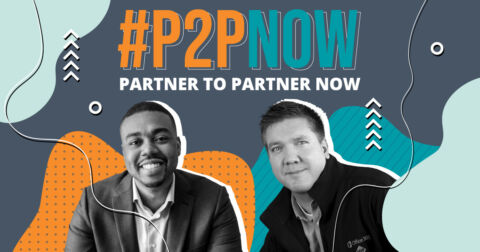You only have one chance to make a first impression, and having an enticing pursuit package ready for partners can mean the difference between getting the deal and losing it.
In this episode of P2PNow, we’re breaking down the best ways to develop strong pursuit packages based on what partners are looking for and what you can realistically offer them as an ISV. Watch the session below or read on for a full transcript!
Transcript
Sam: Today’s topic is on creating pursuit packages as an ISV to expedite the pursuit process. This is something that’s fresh on my mind because it was a big topic at a partner event we just had at AvePoint.
Christian: Closing business is arguably the most important part of business. The next would probably be the ability to deliver on what you sold.
So Sam, how does an ISV help make this process easier for a partner?
Sam: It’s been a transition realizing your audience has changed as a company that’s primarily sold to an end user audience.
The reality is that partners, be they MSPs, VAR, or SIs, are not all created equal. They’re often at different stages in the growth of their business.
Sometimes we get blinders on and think because someone has an LLC that they have a mature sales, delivery, and marketing staff. The reality is that the vast majority of your partner ecosystem is small companies that may have less than 20 employees and been around for less than 5 years.
Christian: That’s a key point. As an ISV, when we’re creating content, we have to take into account not only how a partner will use it, but also the maturity a partner needs to have in order to use it.
Sam: Correct. Folks will often say things to be “streamlined” or “easy.” But what does that tactically mean?
For example, if there is a bid for a project and if I want a partner to add AvePoint to their solution set, do I make that “easy” by providing our technical brochure detailing all the features of our technology?
Or do I provide an example proposal that has been anonymized to show the actual proposal questions and answers? Do I have a capture team that goes as far as helping to actually draft custom content for responses?
Christian: Well when you list all of that out, I guess the knee-jerk reaction would be, “Why not all of it?”
Sam: Exactly, the message is just half the battle. As an ISV, we have to also account for the vehicles that we’re providing this content. We need to have multiple avenues to get the exact same answers depending on the maturity of our partners.
It’s our responsibility to cater to our audiences and what they need. When it comes to our partners, one size does not fit all.
Christian: That’s right. To summarize, when it comes time to create pursuit packages for your partners as an ISV, you need to identify the value and features of your solution.
Then ensure you’re conveying the benefits and features in a variety of mediums based on the maturity of your partners.
Sam: That’s right. And, if you’re unsure which method works best. Create a number of them then ASK your partners what they prefer. Take a poll and get feedback. Then use that information to go deeper on what’s used the most.
Christian: Great stuff, Sam. If you are looking to pursue business with AvePoint, be sure to sign up for the AvePoint partner program by going to avepoint.com/partners.


